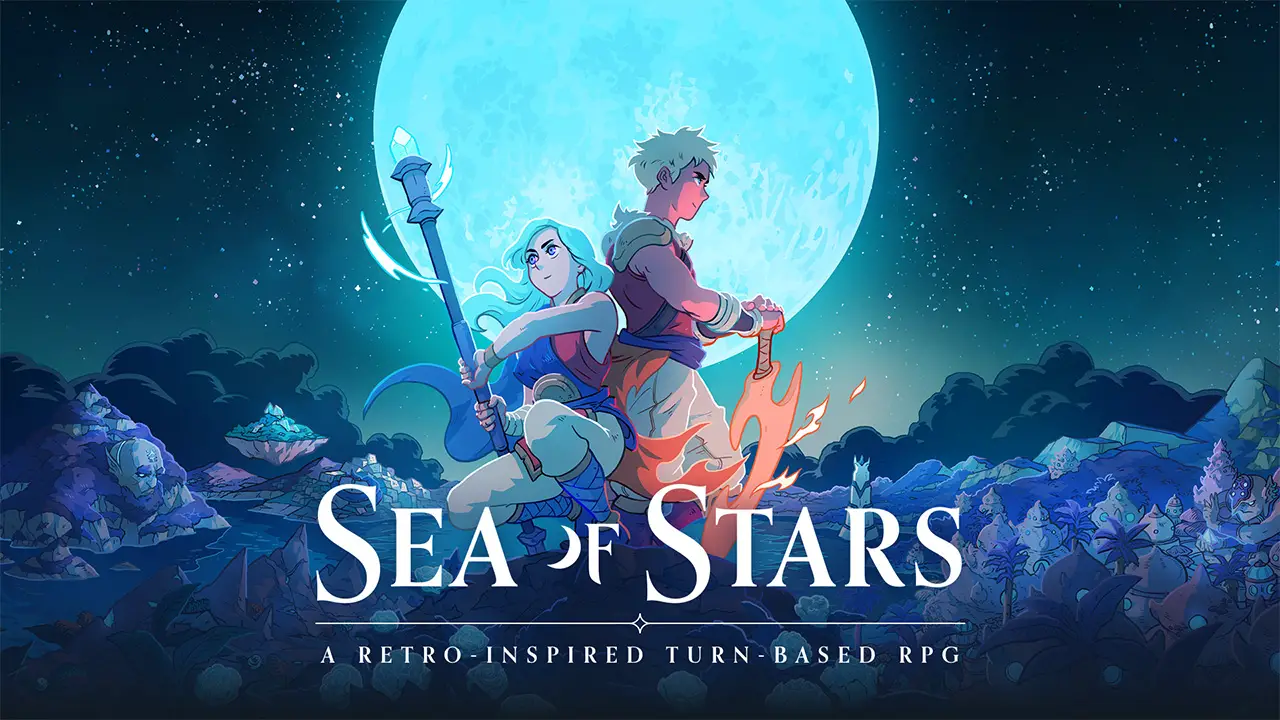Bridging the Past and Present of RPG Design
Developed by Sabotage Studio, Sea of Stars is a turn-based RPG that pays homage to the classics. Introducing entirely new systems and ways to play brings the genre to the modern landscape. The game officially released on August 29, 2023, and is available on Steam, XBOX, Playstation, and on the Nintendo Switch.
A TIMELESS TALE
Sea of Stars tells the story of young heroes journeying to defeat an evil threat and save the world. A tale RPG fans will be familiar with because of its fascinating characters, masterful storytelling, and an engaging world that just keeps on giving. Sea of Stars provides a truly unique experience that is a storytelling masterclass.
The story follows the two Children of the Solstice, Valere and Zale. Accompanying them is their best friend, Garl, who bears no special powers. They embark on a journey to defeat the powerful Fleshmancer and his minions. Playing through the game, you’ll encounter a plethora of interesting characters. You will discover an amazingly immersive world and witness an engaging story that constantly has you vying for more.
MASTERFUL STORYTELLING
The game’s ability to drastically change tones is amazing that I constantly find myself emotionally engaging with the story. This game can go deep in its drama, subjecting you to lighthearted sequences before dropping you into an emotional spiral. An experience this amazing is only possible because of the masterful use of flow in its storytelling. The story is super easy to follow and the game doesn’t bombard you with useless information. Even most NPCs you talk to will say things that actually have an in-game counterpart. This acts as a reminder for the important things and events that you need to pay attention to.
Sea of Stars’ narrative will never cease to amaze me. Preventing myself from comparing this game to other RPGS may prove to be a challenge. I only hope other RPG games will have the same care and quality in their storytelling.
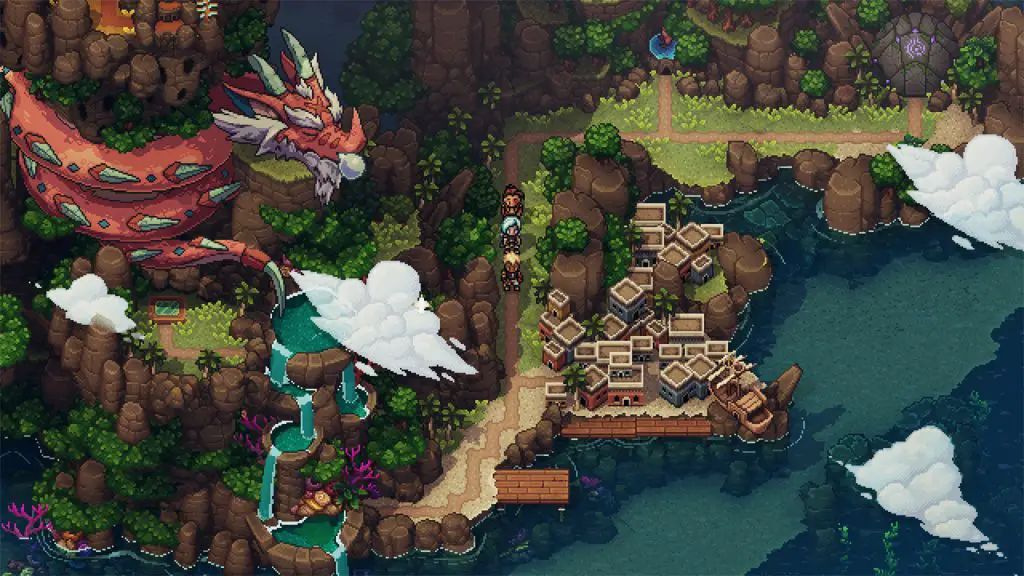
EVOLVING RETRO RPGS
Over the years, I’ve seen many RPGs try new things. Even arguably the biggest JRPG franchise ever, Final Fantasy, has gone through many such changes and has tried so many different things in its mainline series. The early incarnations of the Final Fantasy games were retro pixel RPGs, then over the years, the series slowly started transitioning to 3D with various changes to the gameplay per entry. With the latest entries, Final Fantasy XV and Final Fantasy XVI, even forgoing the classic turn-based battle system in favor of a more action-oriented combat.
So when Sabotage Studio announced that they were making an RPG inspired by retro classics, I already had an inkling that this game wouldn’t be your run-of-the-mill “retro” RPG but rather something unique to try and stand out. What I did not expect was how amazingly these odd features form a surprisingly engaging experience with Sea of Stars.
3D GRAPHICS, 2D AESTHETICS
First, I wanna briefly talk about the graphics. Despite being a 2D RPG, the game developers used a 3D game engine to achieve the game’s visuals. Mixed with 2D techniques such as stylesheets and tile sets to create the 2D aesthetic. As a result, we get to enjoy amazing stylized visuals with the benefits of 3D lighting and rendering, delivering the best of both worlds of timeless art style and modern visual clarity.
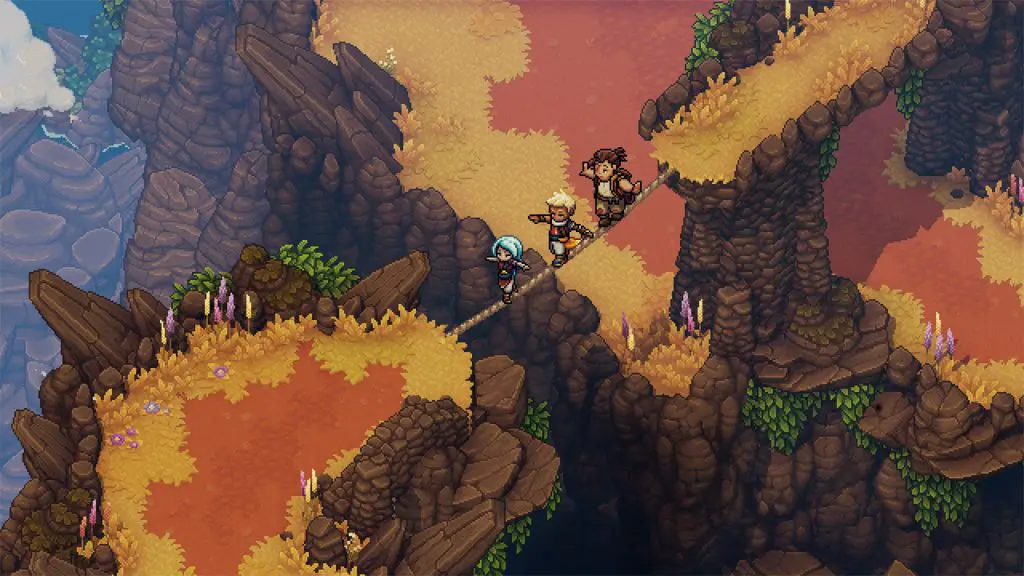
AMUSING TRAVERSAL
Probably the most surprising feature of this game is the platforming. Yes, this is a top-down, “2D”, turn-based RPG with platforming which does feel weird because platforming hadn’t really been synonymous with top-down 2D RPGs. But despite platforming sounding out of place, it actually adds so much more to the game’s exploration.
Honestly, adding platforming to an RPG didn’t sound very appealing at first, as platforming tends to make exploration somewhat tedious. But surprisingly, I actually find exploring in Sea of Stars way better than most RPGs out there. Usually, games that focus on platforming punish you for missed inputs. Messing up a jump in Sea of Stars only results in a bit of time wasted. A game over from platforming is actually impossible.
PUZZLE-SOLVING
Now platforming itself isn’t that much fun, especially for an RPG but Sea of Stars mixes its platforming elements with puzzle solving, and I just can’t express how much better it is to explore and solve puzzles in this game compared to other RPGs.
Puzzle sections in JRPGs are a system that I never really liked. They’re tedious, annoying, and overall just not fun to play through. But with Sea of Stars, I actually enjoyed doing the puzzles. For one, puzzle sections in the game were often visually stunning, and they’re very doable even if you’re running on one brain cell. That doesn’t mean that the puzzles and platforming in the game are stupidly easy, rather, figuring out how to solve the puzzles doesn’t really take that long, and you’ll eventually stumble upon how to proceed after a few minutes of bumping around.
And because this game has platforming, it’ll also introduce you to a bunch of different traversal items unlocked as you progress through the game, gradually opening up new ways for you to explore and solve puzzles keeping puzzle solving and exploration relatively fresh throughout the entire game.
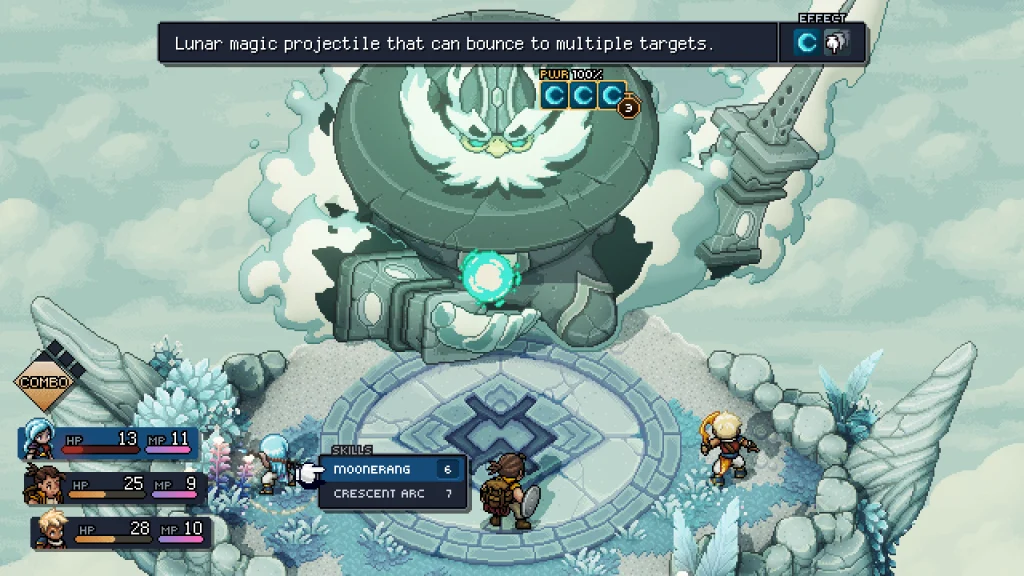
TIMING IS KEY
Sea of Stars takes inspiration from RPG classics such as Chrono Trigger but puts its own spin on things to stand independently. The game forgoes random encounters, and battles occur once you encounter enemies on the map. Aside from that, the game also features “timed hits” and a strategic “lock” system.
Timed Hits lets you press your action button in sync with a character’s attack animation to either increase the damage dealt by your characters or reduce the damage received from enemies.
The Lock system gives you a bit of control during combat. Whenever an enemy attempts to use a skill, symbols called “locks” will appear above them. These locks indicate specific attacks that your characters can perform.
Hitting the enemy with the appropriate attacks corresponding with their locks reduces the damage the enemy’s skill will deal, and completely hitting all locks prevents the enemy from using the skill, essentially stunning them for that turn. These systems add depth to the combat, which makes every encounter an engaging fight.
PROGRESSIVE COMBAT
The game also encourages you to use everything at your disposal in any encounter. Personally, I’m someone who plays RPGs by hoarding everything I can carry. I’d probably end the final boss without using any potions if possible.
The game limits you to carrying 10 food items that act as consumables while actively encouraging you to use them. Combo points and ultimate points are resources that don’t carry over to the next encounter, this is the game’s way of encouraging you to go all in at all times. I find this system quite interesting because compared to other RPGs where 90% of encounters were using the same skill over and over again because they are the fastest way to clear mobs, in Sea of Stars, there’s always this sense of variety in every encounter.
The design of combat controls the flow of battle. In every encounter, you’ll have to use normal attacks to fill up MP, use skills to gain combo points, and use combos to fill up the ultimate meter. This results in a progressive combat experience that starts with weak jabs, leading to powerful attacks. Because of this, combat always feels dynamic, no matter when you’re clearing mobs or duking it out with powerful bosses.
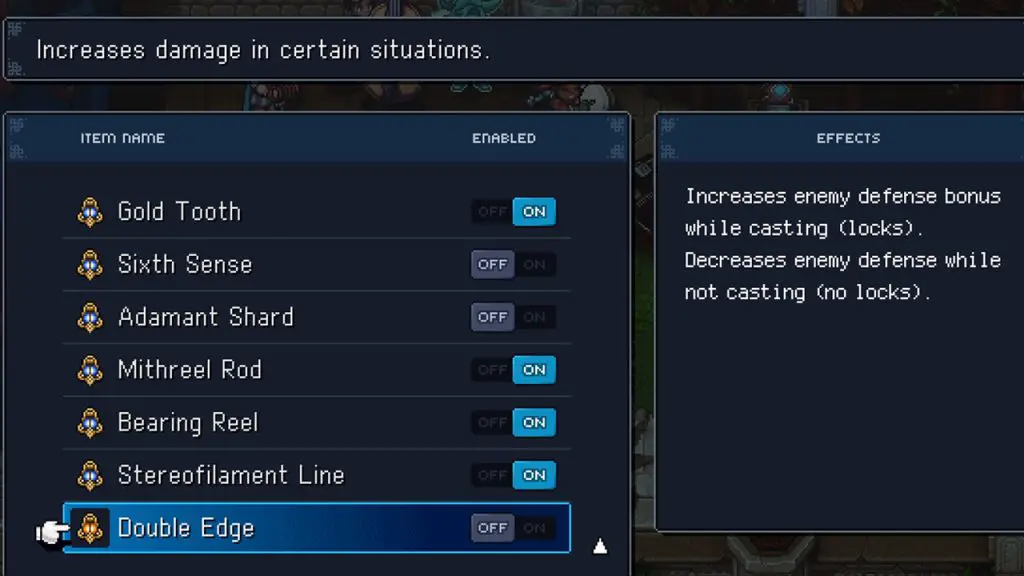
PLAY YOUR WAY (DIFFICULTY & RELICS)
Sea of Stars handles difficulty through optional, toggleable items called “Relics.” Relics range from quality-of-life features such as increased XP gain to outright difficulty modifiers like lowering enemy HP. You can find relics in shops and chests around the world. Again, Relics are completely optional, and you can toggle their effects on or off in the Relics section.
This system is perfect for anyone who prefers to change the game’s difficulty on the fly. May it be to make the game easier or more challenging on demand. But either way, no matter how you play, this game will still be an amazing experience throughout.
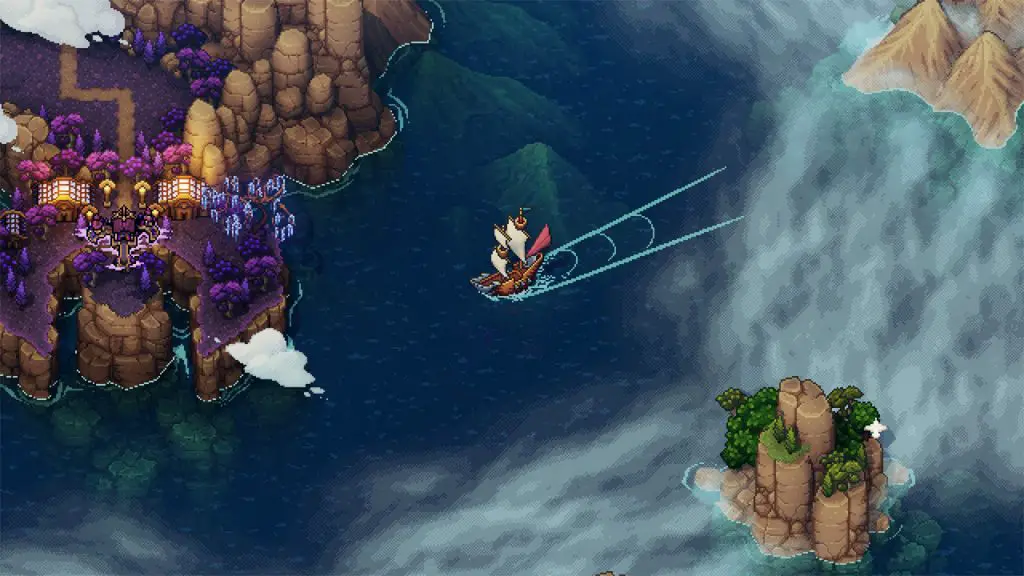
FINAL THOUGHTS
Sea of Stars is an absolutely amazing experience from start to finish. With masterful storytelling, timeless visuals, and spectacular gameplay, this retro-inspired RPG surely made a name for itself by bringing up the standard of not just other retro-inspired RPGs but the RPG genre as a whole.
The game is a testament that experimental features don’t have to feel weird or clunky. That storytelling in the retro RPG format can still stand out in the age of immersive photorealistic cinema-like storytelling of recent games. I highly rank this game as one of the best single-player RPGs. Whether you’re a long-time fan of RPGs or an RPG first-timer, Sea of Stars definitely delivers a solid RPG experience.

